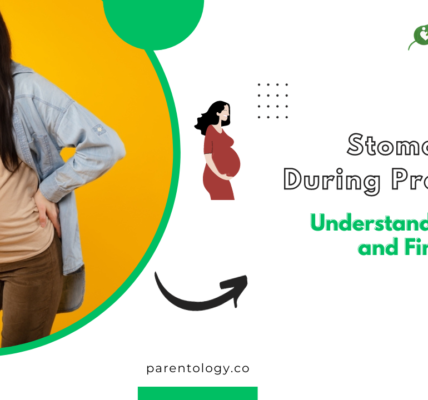Understanding Pregnant Belly Sizes: What You Need to Know
The journey of pregnancy is a transformative experience, and one of its most visually notable aspects is the pregnant belly. Understanding the varying sizes and shapes of a pregnant belly can offer valuable insights into the remarkable changes occurring within a mother’s body.
An Overview of Pregnant Belly Sizes and Shapes
A pregnant belly’s size and shape can differ significantly among expectant mothers. Factors such as the number of pregnancies, individual body types, fetal position, and gestational age contribute to the variations observed in pregnant belly sizes.
Tracking Pregnancy Progress with Belly Measurements
Healthcare providers often track the progression of pregnancy by measuring the size of the pregnant belly. Fundal height measurements, taken from the top of the uterus to the pubic bone, provide insights into fetal growth and development.


Pregnant Belly Size Chart: Understanding the Norms
While there is no universal standard for the “perfect” belly size, a pregnant belly typically grows predictably throughout the trimesters. Understanding the average range of belly sizes for each trimester can provide reassurance to expectant mothers.
Factors Influencing Pregnant Belly Size
Several factors impact the size and shape of a pregnant belly. The position of the baby, the mother’s physique, the presence of multiples (twins or more), amniotic fluid levels, and the uterus’s position all contribute to the varying appearances of pregnant bellies.
Different Shapes of Pregnant Bellies
Pregnant bellies can manifest in various shapes. Some women display a neat, rounded appearance, while others may have a more oblong or broad-shaped belly. Each shape is unique and reflects the way the uterus accommodates the growing fetus.
Changes in Belly Size Throughout Pregnancy
As pregnancy progresses, the size and shape of the pregnant belly evolve. While subtle changes are expected early on, rapid growth occurs in the later stages, particularly in the third trimester, as the baby gains weight and the uterus expands.
Concerns About Belly Size Discrepancies
Occasional concerns about smaller or larger-than-average belly sizes may arise. However, healthcare providers monitor and evaluate such discrepancies to ensure the well-being of both mother and baby, as variations can be normal due to individual differences.
Embracing the Unique Journey
Every pregnant belly tells a unique story, reflecting the incredible journey of motherhood. Embracing the changes, celebrating the growing life within, and fostering a positive mindset contribute to a fulfilling pregnancy experience.
Pregnancy Milestones and Belly Size
The size and shape of the pregnant belly serve as visible markers of the progression of pregnancy. As the weeks pass, the gradual expansion of the abdomen reflects the growth and development of the baby, marking key milestones in the pregnancy journey.


Impact of Multiple Pregnancies
In cases of multiple pregnancies, such as twins or triplets, the pregnant belly’s size and shape often differ significantly from singleton pregnancies. The uterus expands differently, resulting in a larger belly size and different contours.
Maternal Body Composition and Belly Appearance
The pregnant belly’s appearance can vary based on the mother’s pre-pregnancy physique. Women with stronger abdominal muscles or a more petite frame might exhibit a more prominent and defined belly shape earlier in pregnancy.
Gestational Age and Belly Growth
Throughout the trimesters, the rate of belly growth varies. In the first trimester, the uterus remains within the pelvis, leading to minimal external changes. However, in the second and third trimesters, the belly visibly enlarges as the uterus rises above the pelvic region.
Measuring Fundal Height for Belly Size
Healthcare providers often use fundal height measurements during routine prenatal check-ups to estimate fetal growth. An appropriate fundal height indicates healthy development, while significant deviations might warrant further assessment.
Concerns Regarding Small or Large Bellies
Occasional worries about belly size discrepancies, either smaller or larger than expected, may arise. However, healthcare providers monitor these concerns closely, assessing factors such as fetal growth, amniotic fluid levels, and the baby’s position.
Emotional and Psychological Impact
The pregnant belly’s changing size and shape can have a profound emotional impact on expectant mothers. Embracing these changes, seeking support from partners, family, or support groups, and practicing self-care help manage emotional fluctuations.
Supporting Maternal Well-being
Promoting a positive body image and self-acceptance are vital for expectant mothers. Engaging in activities that promote relaxation, seeking prenatal yoga or gentle exercises, and connecting with other expectant mothers foster a supportive environment.
Enjoying the Pregnancy Journey
Understanding the uniqueness of each pregnant belly and relishing the experience of carrying a life within is an essential part of the pregnancy journey. Cherishing moments, creating memories, and staying attuned to the baby’s movements enhance the bond between mother and child.
Addressing Concerns about Belly Size Discrepancies
When pregnant individuals notice unusual changes or have concerns about their belly size, it’s crucial to communicate openly with healthcare providers. These professionals assess various factors, including fetal growth, amniotic fluid levels, and maternal health, to ensure the well-being of both mother and baby.
Healthy Practices for Supporting Belly Growth
Maintaining a balanced diet, staying physically active (with approval from healthcare providers), practicing prenatal yoga or gentle exercises, and staying adequately hydrated are beneficial practices that support healthy belly growth and maternal well-being.
Partner Involvement and Support
Partners play a vital role in supporting expectant mothers through the journey of pregnancy. Encouraging open communication, attending prenatal appointments together, and actively participating in preparations for the baby’s arrival strengthen the bond between partners.
Changes in Belly Shape Throughout the Day
The pregnant belly’s appearance might fluctuate throughout the day due to factors like fetal movement, changes in posture, or the consumption of food and liquids. This fluctuation is normal and doesn’t necessarily indicate a problem.
Managing Discomfort Associated with Belly Size
As the belly grows, expectant mothers might experience discomfort due to increased pressure, backaches, or difficulty sleeping. Utilizing pillows for support, practicing relaxation techniques, and using maternity support garments can alleviate discomfort.
Adapting Clothing Choices
As the pregnant belly expands, comfortable and appropriately fitting clothing becomes essential. Maternity wear designed to accommodate the changing body shape ensures comfort and supports the belly throughout pregnancy.


Celebrating the Pregnant Belly
Capturing the beauty of the pregnant belly through maternity photoshoots or journaling the pregnancy journey allows expectant mothers to cherish and celebrate this unique phase of life.
Postpartum Changes in Belly Appearance
After childbirth, the belly doesn’t immediately return to its pre-pregnancy state. It takes time for the uterus to shrink back to its original size, and it’s normal to have a postpartum belly for some time before it gradually reduces.
Embracing the Transformation
Each pregnant belly represents a unique narrative, showcasing the incredible journey of pregnancy. Embracing the changes, nurturing self-care, and staying informed empower expectant mothers to navigate this transformative experience confidently.
Differences in Belly Sizes between First-Time and Subsequent Pregnancies
Women often notice variations in belly sizes between their first and subsequent pregnancies. With subsequent pregnancies, the abdominal muscles might stretch more easily, resulting in a more noticeable and prominent belly earlier on.
Nutritional Impact on Belly Size and Baby’s Development
A balanced diet rich in nutrients is crucial for supporting healthy belly growth and the baby’s development. Consuming adequate proteins, vitamins, minerals, and staying hydrated positively influences the size and well-being of the pregnant belly.
Genetic and Hormonal Influences on Belly Appearance
Genetic factors and hormonal fluctuations influence the pregnant belly’s appearance. The Genetic predispositions determine body types, affecting how the pregnant belly presents itself, while hormonal changes contribute to variations in belly size.
Supporting a Positive Body Image During Pregnancy
Pregnancy is a time of immense physical changes, and embracing these changes promotes a positive body image. Encouraging self-care practices, nurturing oneself emotionally, and acknowledging the body’s strength during this transformative phase are essential.
Educational Resources for Understanding Belly Changes
Access to reliable educational resources and reputable platforms offering guidance on pregnant belly sizes, changes, and their implications empowers expectant mothers to navigate their pregnancy journey with confidence and knowledge.
Addressing Stereotypes and Misconceptions about Belly Size
Societal perceptions and media portrayals often perpetuate unrealistic standards about pregnant belly sizes. Dispelling stereotypes and promoting acceptance of diverse belly sizes contribute to fostering a supportive and inclusive environment for expectant mothers.
Postpartum Recovery and Belly Changes
After childbirth, the body undergoes a gradual recovery process, including the reduction of the enlarged uterus. Belly size reduction occurs over time, and postpartum exercises, when recommended by healthcare providers, aid in regaining abdominal strength.
Cultural Celebrations of the Pregnant Belly
Various cultures worldwide celebrate the pregnant belly through rituals, ceremonies, or traditional practices. These celebrations honor the significance of pregnancy and embrace the changes that come with it.
Reflections on the Journey of Motherhood
The pregnant belly symbolizes the extraordinary journey of motherhood, reminding expectant mothers of the strength, resilience, and love that accompany this profound phase of life.
FAQs
1. What causes variations in pregnant belly sizes?
Pregnant belly sizes differ due to factors like fetal position, the number of pregnancies, individual body types, and gestational age.
2. Is it normal for pregnant bellies to differ in shape and appearance among women?
Yes, pregnant bellies come in various shapes and sizes, influenced by factors such as muscle tone, uterus position, and genetic predisposition.
3. How can I differentiate between a baby bump and bloating during pregnancy?
A baby bump is firm and gradually grows, reflecting the baby’s development. Bloating tends to fluctuate and is softer to the touch.
4. Should I be concerned if my pregnant belly seems smaller or larger than average?
Occasional variations in belly size are normal. However, if concerned, it’s advisable to consult healthcare providers for evaluation and reassurance.
5. Can the position of the baby affect the appearance of the pregnant belly?
Yes, the baby’s position in the uterus can influence how the pregnant belly appears externally.
6. When should I expect to see a noticeable pregnant belly during pregnancy?
A visible baby bump might appear around the second trimester, varying based on individual factors like body type and muscle tone.
7. Are there any exercises or practices that can support healthy belly growth during pregnancy?
Gentle exercises approved by healthcare providers, such as prenatal yoga or walking, can help support healthy belly growth and overall well-being.
8. What is fundal height measurement, and why is it important during prenatal check-ups?
Fundal height measures the uterus’s growth to assess fetal development. It’s essential for monitoring the baby’s growth and well-being.
9. Can belly size affect the mother’s comfort during pregnancy?
As the belly grows, discomfort might arise due to increased pressure. Utilizing support garments or pillows and practicing relaxation techniques can help alleviate discomfort.
10. Will my belly size immediately decrease after giving birth?
The belly doesn’t immediately return to pre-pregnancy size. It takes time for the uterus to shrink back, and gradual postpartum changes are normal.
Conclusion
The pregnant belly is a testament to the miraculous process of creating life. Understanding the nuances of pregnant belly sizes and shapes allows expectant mothers to appreciate the diverse experiences while fostering confidence in their individual pregnancy journeys.
Explore Parentology.co for a wealth of expert advice, resources, and guidance on pregnancy, childbirth, and maternal health, empowering mothers-to-be with knowledge and support throughout this transformative phase.
Infographics



